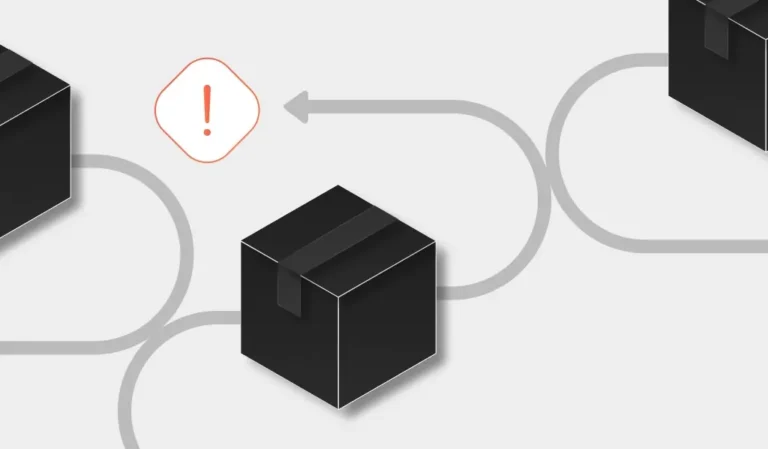Consumer Fraud is on the rise, and retailers are feeling the pinch. A sneaky tactic known as return fraud is swindling businesses out of billions of dollars every year. But what exactly is return fraud, and how does it involve stolen or counterfeit merchandise?
Understanding Return Fraud
Return fraud occurs when a customer returns merchandise to a retailer for a refund or credit, but something fishy is going on. In the case of stolen or counterfeit goods, fraudsters are essentially** double-dipping**. They steal the merchandise or acquire a counterfeit, then return it for a full refund, profiting from the retailer’s good faith.
How It Works
Return fraud isn’t limited to shoplifting and fake receipts. Here are some of the ways stolen or counterfeit merchandise ends up in return scams:
- Wardrobing: This involves buying an expensive item for a special occasion, using it, then returning it claiming it’s unworn.
- Receipt Roulette: Fraudsters might buy a lower-priced item, then try to return it with a receipt for a more expensive one.
- Switcheroo: An authentic product is swapped with a counterfeit or damaged one before returning it.
- Online Return Abuse: Fraudsters exploit loopholes in online return policies, ordering multiple items with the intention of only keeping a few and returning the rest.
The Impact of Return Fraud
Retailers are losing billions to return fraud, and these losses ultimately trickle down to consumers. Here’s how it hurts everyone:
Beyond the Bottom Line: The Cost Consumers Bear
- Higher Prices: To recoup losses from return fraud, retailers may raise prices for all customers, even those who are honest.
- Stricter Return Policies: Fending off fraud can lead to stricter return windows, shorter refund periods, and limitations on return quantities. This can inconvenience honest customers who need to make legitimate returns.
- Reduced Product Availability: Fraudulent returns disrupt inventory management. Out-of-stock items due to returns can lead to lost sales and customer frustration.
A Web of Deception: The Impact on Trust and Innovation
- Reduced Investment in Customer Service: Resources spent combating return fraud can be diverted from initiatives that enhance customer service and the overall shopping experience.
- Stifled Innovation: Fear of fraud may discourage retailers from offering innovative services, such as extended return windows or try-before-you-buy options.
- Erosion of Consumer Trust: When return policies become stricter or less transparent due to fraud, consumer trust suffers. This can lead to hesitation when making online purchases.
The Domino Effect: How Fraud Impacts the Broader Economy
- Job Losses: Retailers facing significant return fraud losses may be forced to cut costs, potentially leading to job reductions.
- Increased Insurance Premiums: The rise of return fraud can drive up insurance premiums for retailers, further impacting their bottom line.
- Discouragement of New Businesses: A retail environment plagued by return fraud can be discouraging for new businesses, hindering economic growth and competition.
How to Spot Return Fraud
Retailers are getting better at detecting return fraud, but there are always new tricks. Here are some signs that a return might be fraudulent:
- Vague or Inconsistent Reasons for Return: A genuine customer can usually explain why they’re returning an item. Be wary of customers who offer unclear justifications or whose stories change upon further questioning.
- Unusual Payment Methods: Purchases made with pre-paid debit cards or gift cards obtained through suspicious means could be a sign of return fraud.
- Shipping Discrepancies: Mismatched billing and shipping addresses, or packages being shipped from a different location than the purchase address, can raise red flags.
- Excessive Use of Self-Service Returns: While convenient, self-service kiosks offer anonymity, potentially appealing to fraudsters. If a customer frequently utilizes these for high-value returns, it warrants investigation.
- Returns Made by New Accounts: A sudden influx of returns from newly created accounts, particularly for expensive items, is a cause for concern.
What You Can Do
As a consumer, you can help fight return fraud by following these tips:
- Keep your receipts safe
- Return items in their original packaging
- Be honest about the reason for your return
- Report suspected return fraud to the retailer
Working Together to Stop Return Fraud
Return fraud is a serious problem, but by working together, retailers and consumers can combat it. By implementing stricter policies, utilizing advanced detection methods, and staying vigilant, we can create a fairer and more secure retail environment for everyone.


